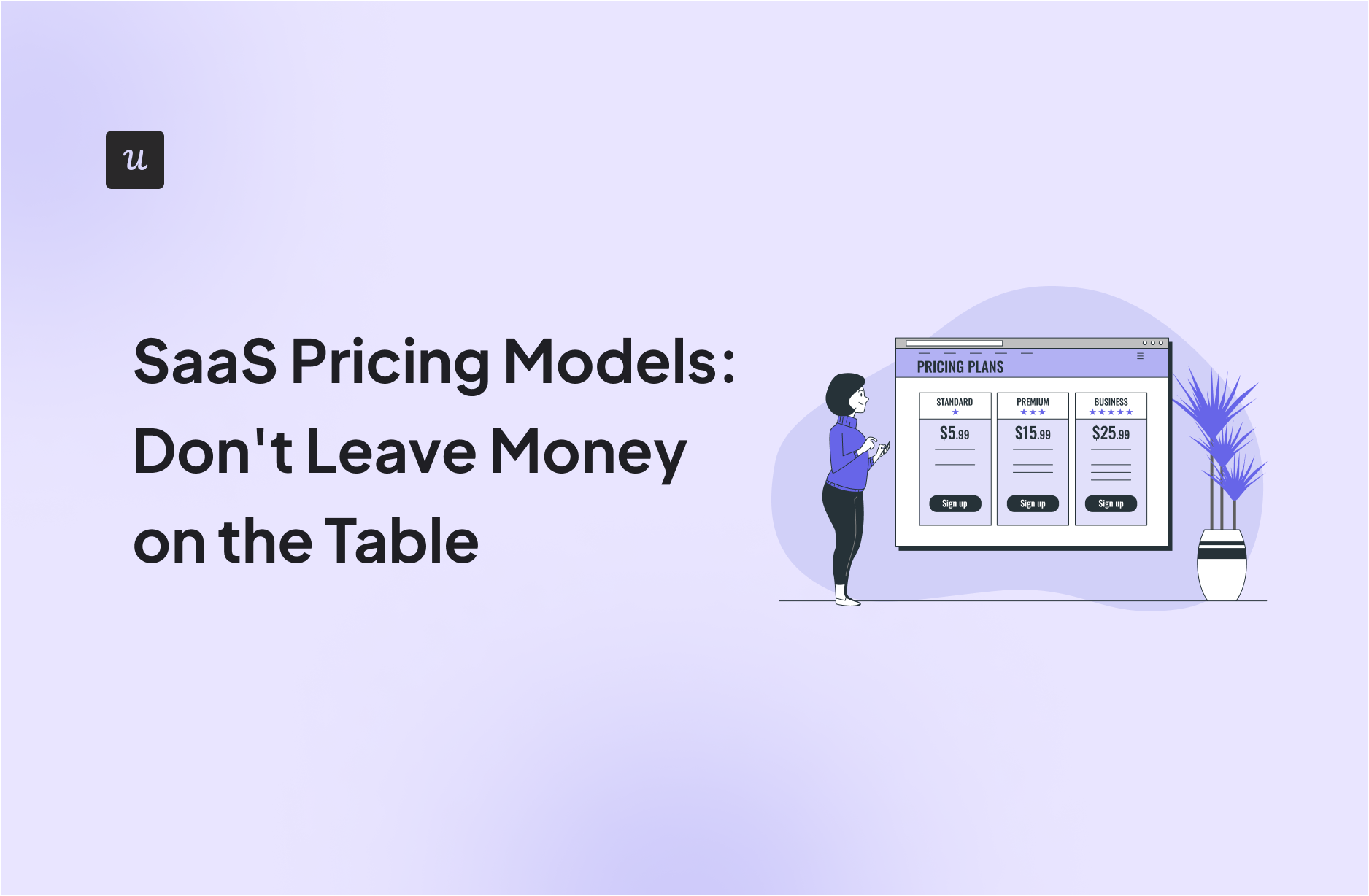
What if the “perfect” SaaS pricing model wasn’t just about choosing between flat subscriptions and usage-based billing?
The reality is that pricing is a complex decision with a multitude of factors to consider. The model you use will affect your revenue streams and directly influence how customers perceive your product, so this isn’t something to rush into.
But don’t worry: by the end of this post, you’ll clearly understand how to choose the perfect pricing model for your product. We’ll start by covering seven models that have worked for SaaS brands, then dive into the intricacies of customer psychology and principles for balancing customer willingness to pay and your own long-term profitability.
Excited? Let’s jump in!
How do you currently gather feedback to inform your SaaS pricing models?
Try Userpilot Now
See Why 1,000+ Teams Choose Userpilot

7 types of different pricing models for SaaS companies
A pricing model is a framework used to determine the optimal price for a product or service. Below are the most popular SaaS pricing models, along with real-life examples:
1. Flat-rate pricing model
A flat-rate pricing structure offers a single price for access to all features. It’s like your Netflix subscription—one monthly fee gives you unlimited access to their entire library of movies and shows. The fixed amount is typically charged monthly or annually, and it doesn’t matter how much (or little) the user engages with the product within that period.
Example: Buffer provides fixed prices with no additional or hidden costs. This makes it easy for current and potential customers to understand the value they’re getting on each plan.
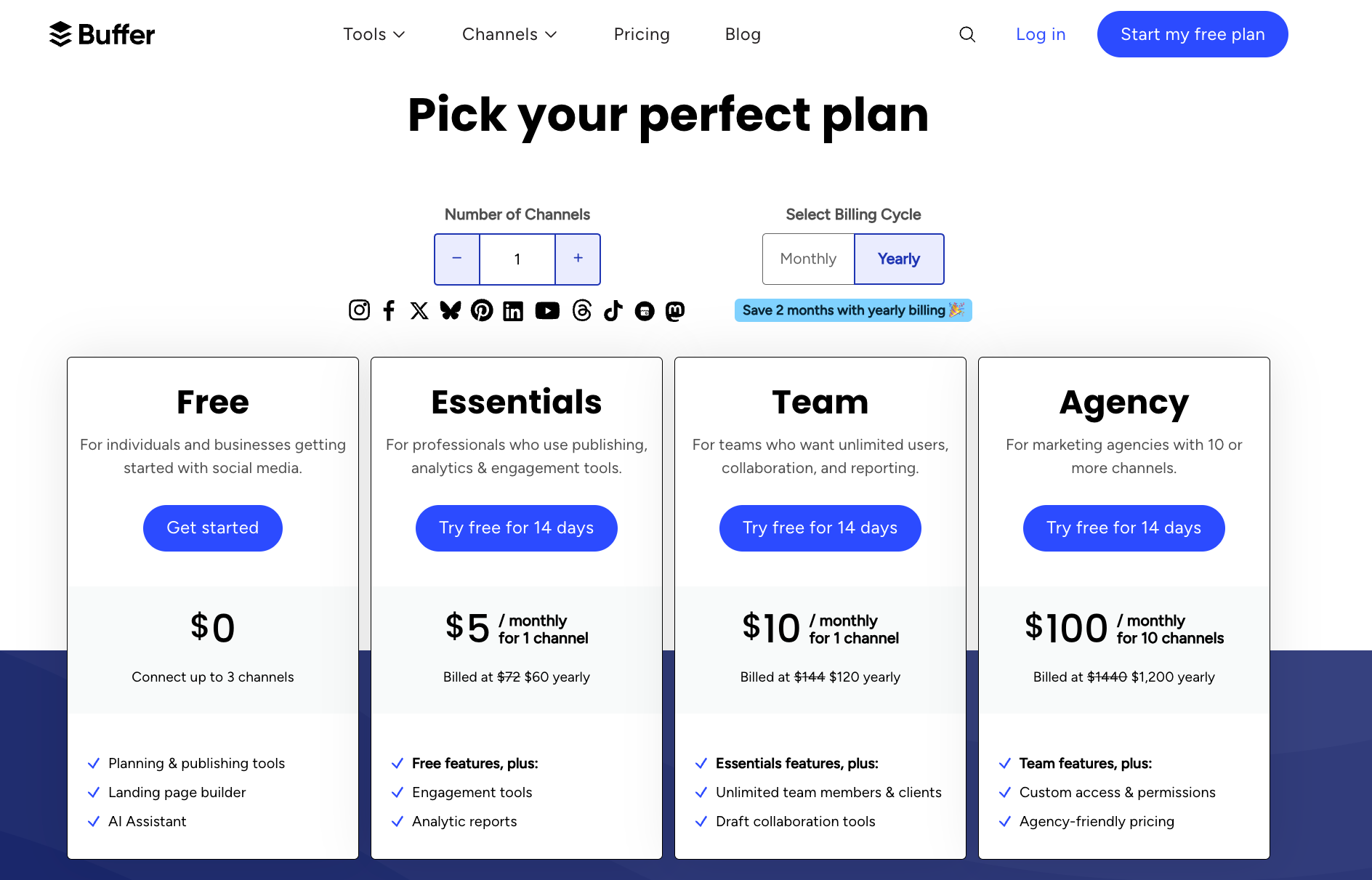
2. Usage-based pricing
Usage-based pricing—or pay-as-you-go—charges customers based on consumption. The product usage here is typically measured by metrics, like data storage used, transactions processed, or the number of API calls made.
This pricing model encourages mindful spending, as users know the costs associated with their usage.
Example: Stripe charges a small fee per transaction processed, making it a cost-effective solution for businesses with varying sales volumes.
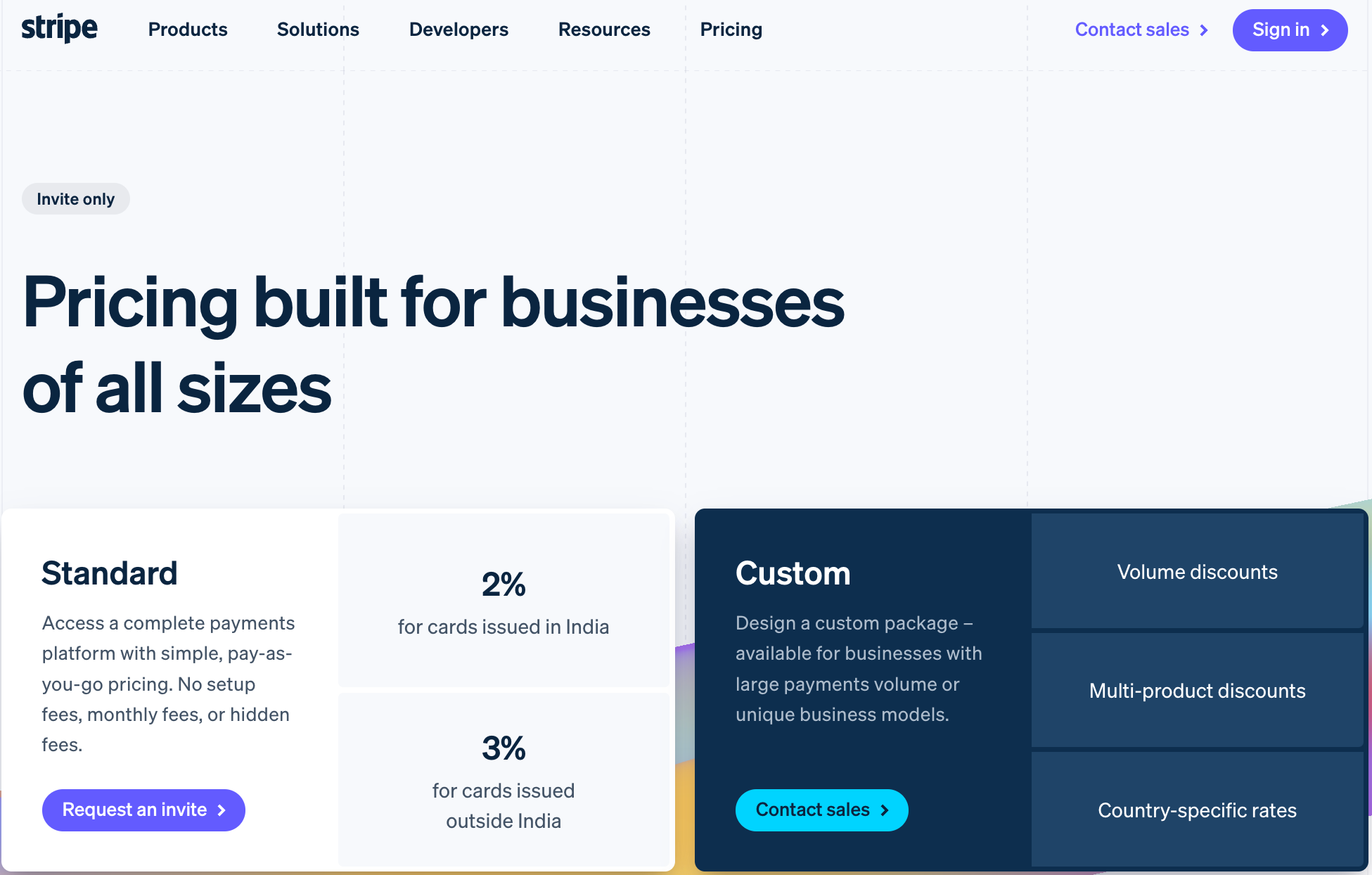
3. Tiered pricing model
The tiered pricing strategy offers different packages with varying features and price points. It helps SaaS companies cater to a wide range of customers with different needs and budgets.
This structure also allows for natural upselling. As a customer’s business grows, they can easily upgrade to a higher tier to access more advanced features or increased usage limits.
Example: Zoom offers multiple pricing tiers. Users can start on the “Pro” plan, allowing a maximum of 100 meeting participants, and later upgrade to the “Business” or “Business Plus” plans as their needs grow.
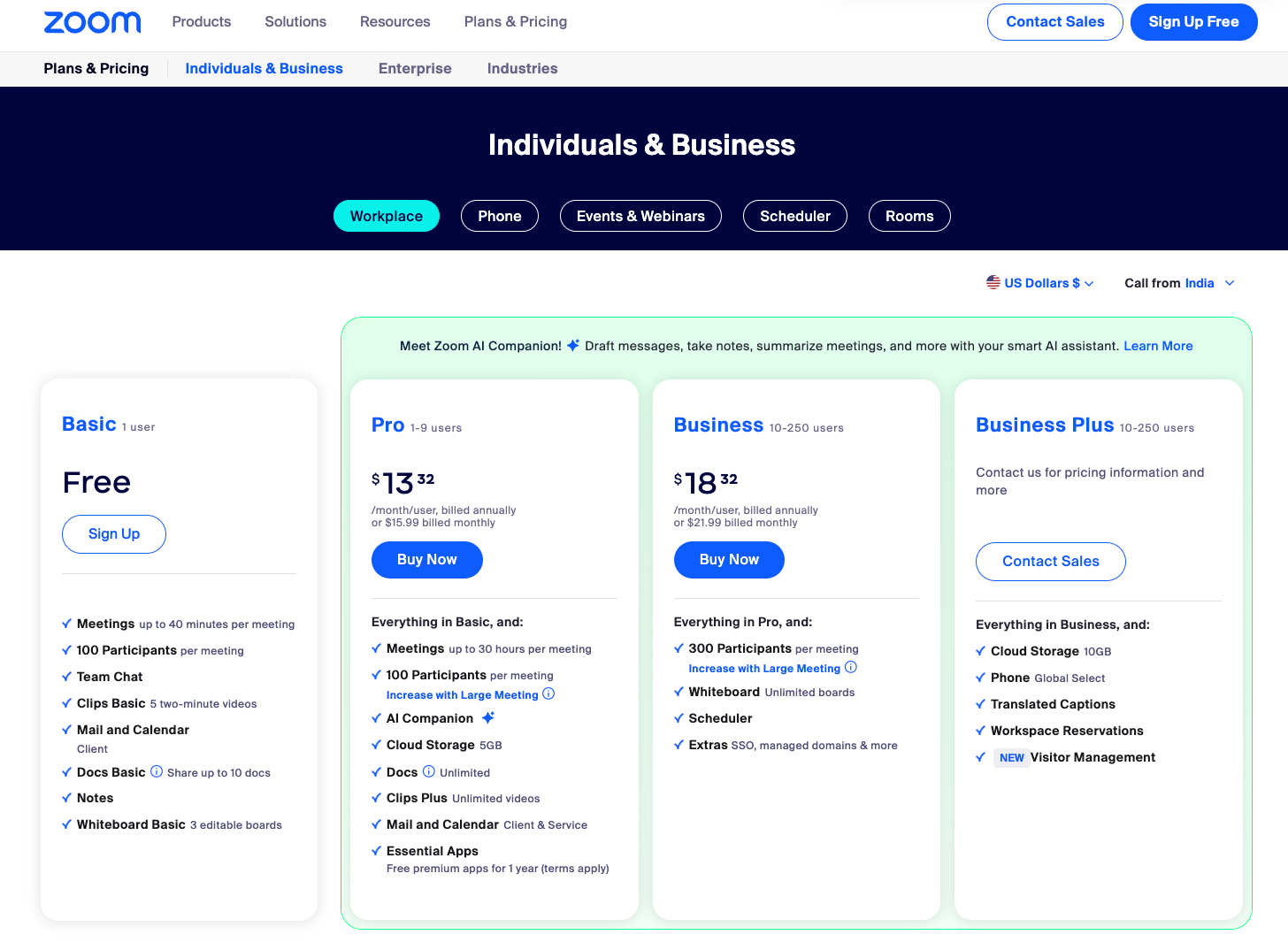
4. Per-user pricing model
With per-user pricing, you’re essentially charging for each individual who uses your software. It’s a common approach for collaborative tools like project management software or CRM systems.
Most SaaS companies that use per-user pricing do so because it directly aligns cost with the value received: customers only pay for the number of users who benefit from the software. This makes it easy for customers to scale their usage up or down as needed and also means the SaaS provider is fairly compensated for the resources used.
Example: Google Workspace charges customers per user per month.
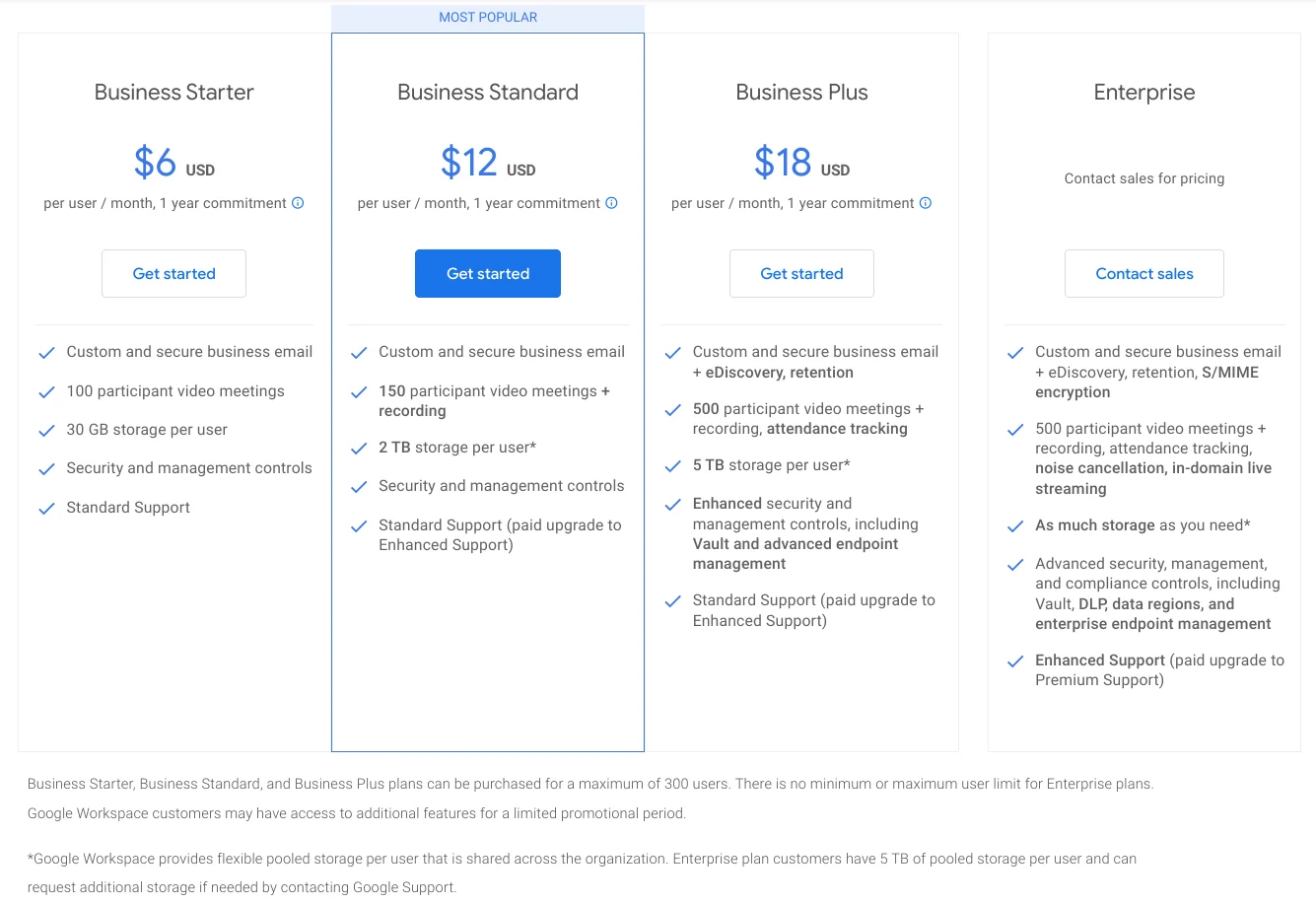
5. Feature-based pricing model
This model follows the same principle as per-user pricing, with the difference being that customers pay for features or modules used, not the number of seats occupied.
Per-feature pricing can become complex and potentially confusing for customers if there are many features to choose from. However, you can simplify the decision-making process by providing clear communication.
Example: Amazon Web Services (AWS) only charges users for the specific services they use.
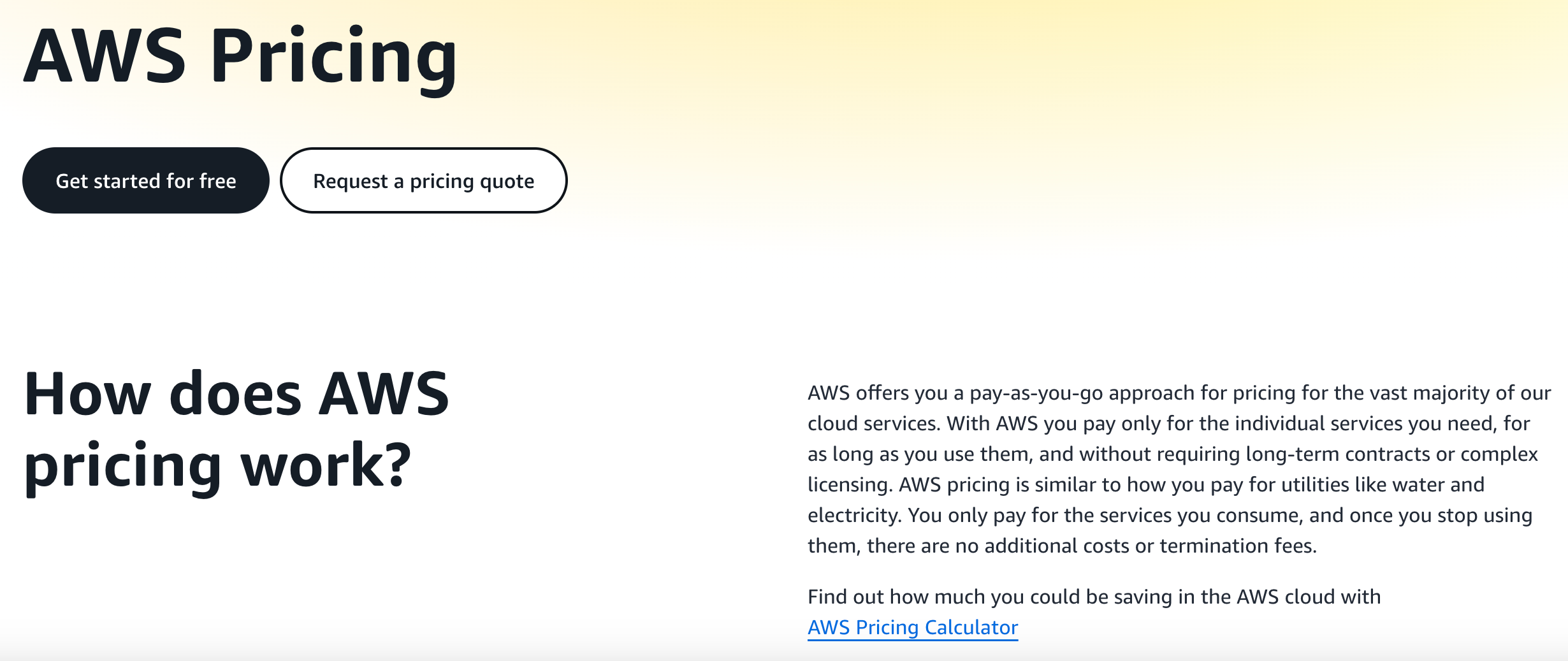
6. Per active user pricing
This is a variation of the per-user model where you charge customers only for the users who are actively using your software during a specific period (often defined by the monthly active user metric). It’s effective because it addresses the concern of paying for inactive users, which can be a common issue with the traditional per-user model.
The per-active user model is often a good fit for large organizations with many users who may not all be actively using the software simultaneously. While it might offer less of an advantage to smaller businesses, it can still be valuable for any company with fluctuating usage patterns.
Example: Slack’s customers pay based on how many team members actively use the product each month.
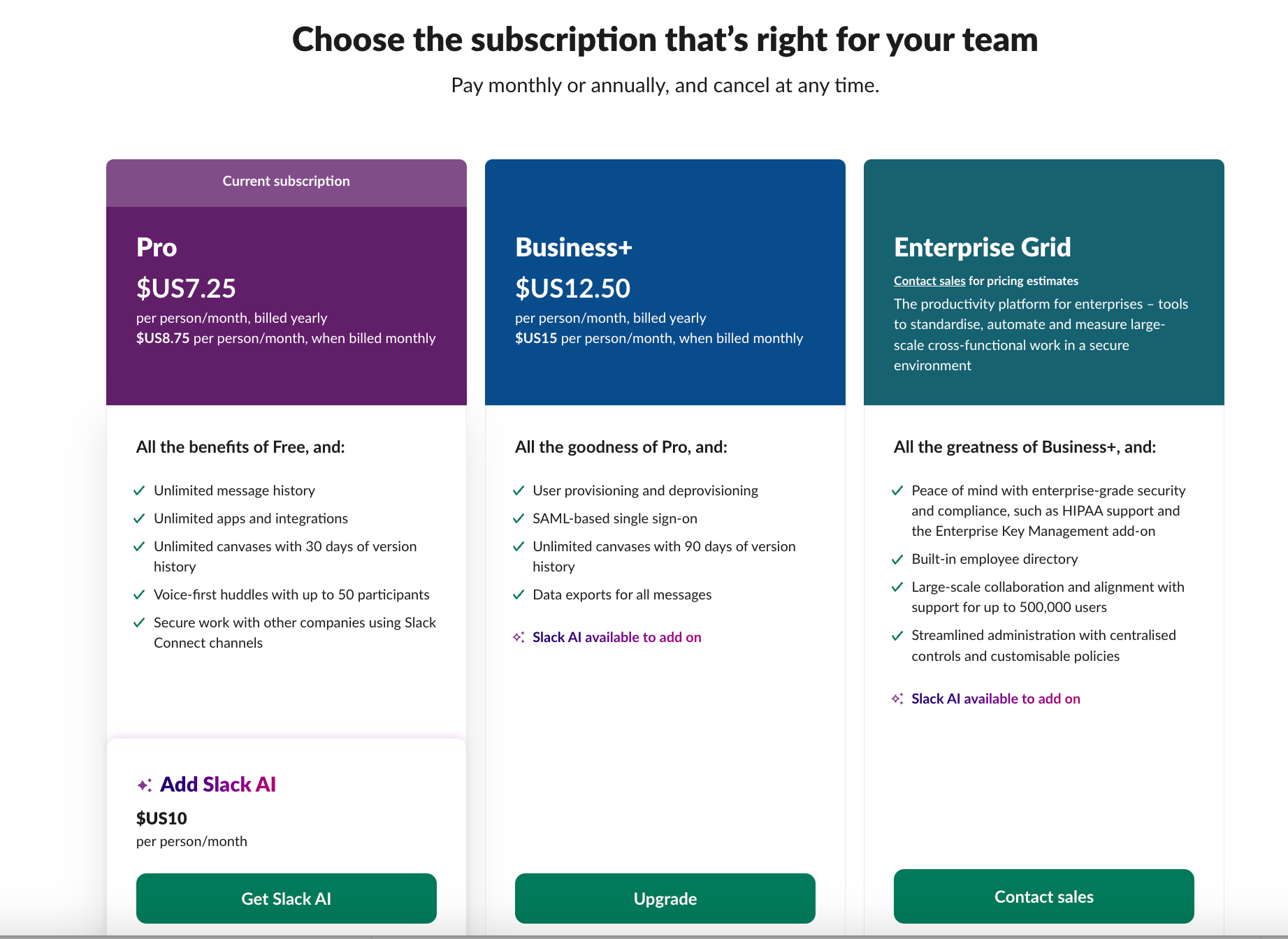
7. Freemium pricing model
The freemium model offers a free basic version of the software while charging for more advanced features.
This model lowers the barrier to entry and allows users to experience your product’s value without any upfront commitment. However, the freemium model requires a delicate balance: your free version needs to be compelling enough to attract users but limited enough to incentivize upgrades.
Example: Canva offers a 100% free version with limited functionality.
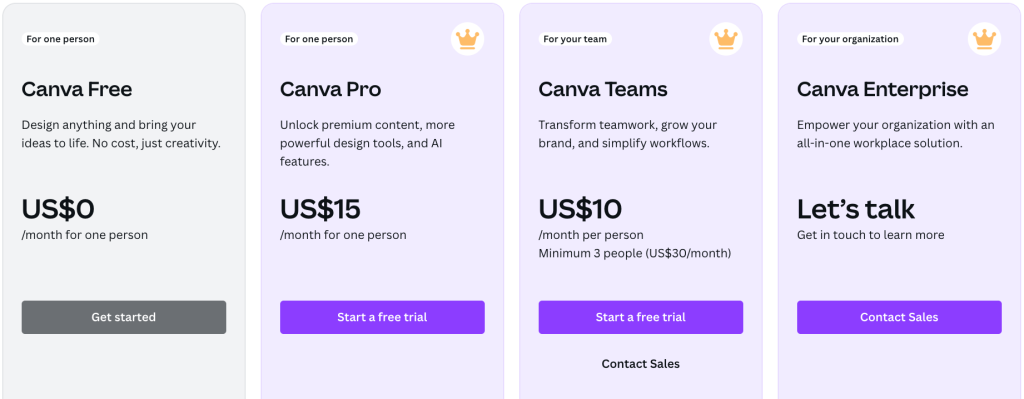
How does SaaS pricing work?
Choosing the right pricing model is just one piece of the puzzle. To achieve sustainable success, you need to develop comprehensive SaaS pricing strategies that align with your business goals and customer needs.
Let’s dive into the key elements of these strategies:
Value-based pricing
Value-based pricing is one of the most effective SaaS pricing strategies because it’s based on your product’s perceived value and the customer’s willingness to pay.
The downside? Determining these qualitative factors isn’t easy. How do you accurately measure the perceived value of increased efficiency or time savings? How do you determine the price points at which your target market sees value but doesn’t feel the cost is prohibitive?

Cost-plus pricing strategy
This is a more straightforward, ‘bottom-up’ approach where you calculate your total costs (development, marketing, support, etc.) and add a markup to determine your selling price.
Now, here comes the tricky part: figuring out the right markup percentage. A good starting point is to research industry standards and see what markup percentages are common for similar SaaS products. Don’t forget to factor in your desired profit margins. How much profit do you want to make on each sale? This will help you determine a markup that aligns with your financial goals.
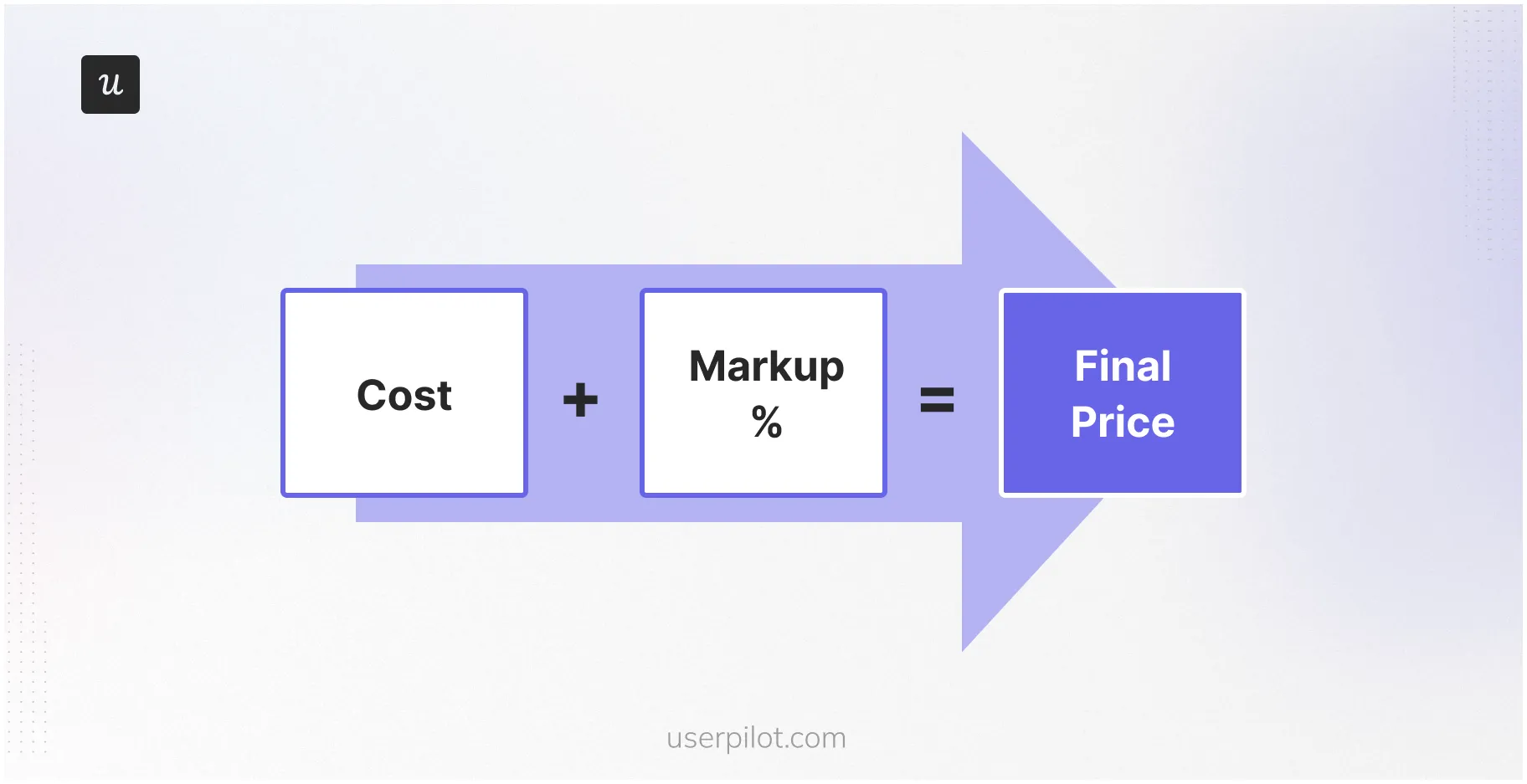
Competitor-based pricing
Unlike the other SaaS pricing strategies, this model doesn’t necessarily prioritize factors like perceived value or production costs. The main goal here is to position your product by offering prices similar to what your competitors are charging.
You can approach competitive pricing in one of three ways:
- Price below competitors: Use this if you aim to undercut competitors and capture market share quickly.
- Price above competitors: Want potential customers to see you as the crème de la crème? This strategy positions your product as a premium offering that conveys a sense of higher quality or exclusivity. But don’t forget: A higher price demands unique features or benefits that truly set your product apart.
- Match competitor pricing: This approach helps you maintain a competitive edge by staying in line with prevailing market prices.
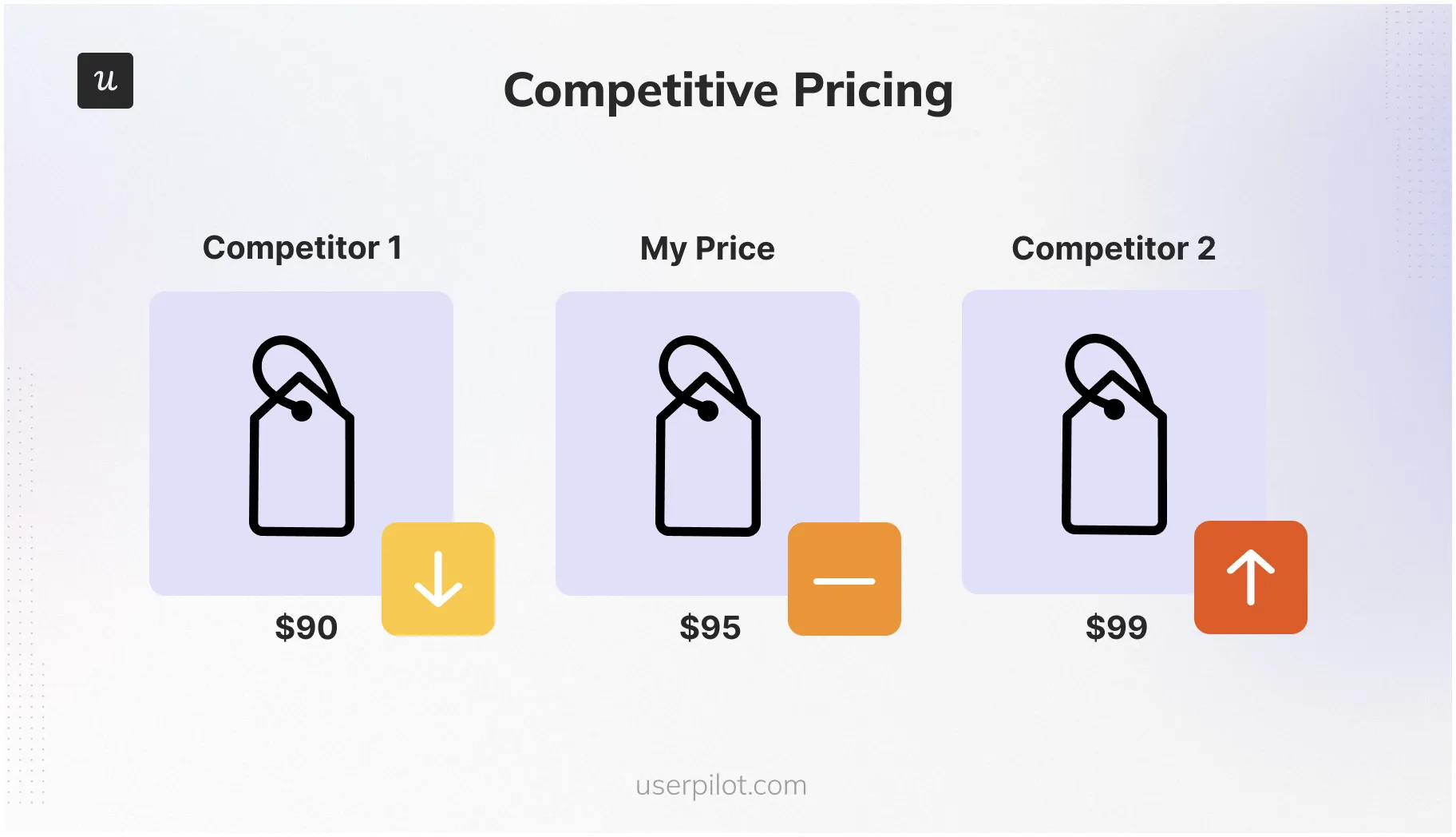
The psychology behind SaaS pricing models
Ever wonder why some prices just seem more appealing than others? It’s not always about the numbers themselves. Psychological factors play a significant role in how customers perceive your pricing, especially with SaaS tools, where value can be less tangible than with physical products.
Here are some psychological principles to keep in mind when setting prices:
- Anchoring: Use a high initial price to make subsequent prices seem more reasonable. Imagine seeing a software package initially priced at $500 per month, then later offered at $200 per month. That initial high price will act as an anchor that makes the discounted price seem like a steal.
- Loss aversion: People hate losing more than they love winning. Framing your pricing in terms of what customers stand to lose (e.g., “Don’t miss out on this limited-time discount!”) can be more effective than focusing on gains.
- Framing: It’s not just what you say, but how you say it. Always lead in with the benefits customers stand to enjoy.
- Decoy effect: This involves offering a less attractive option to make a target option seem more appealing by comparison.
Consider the following example:
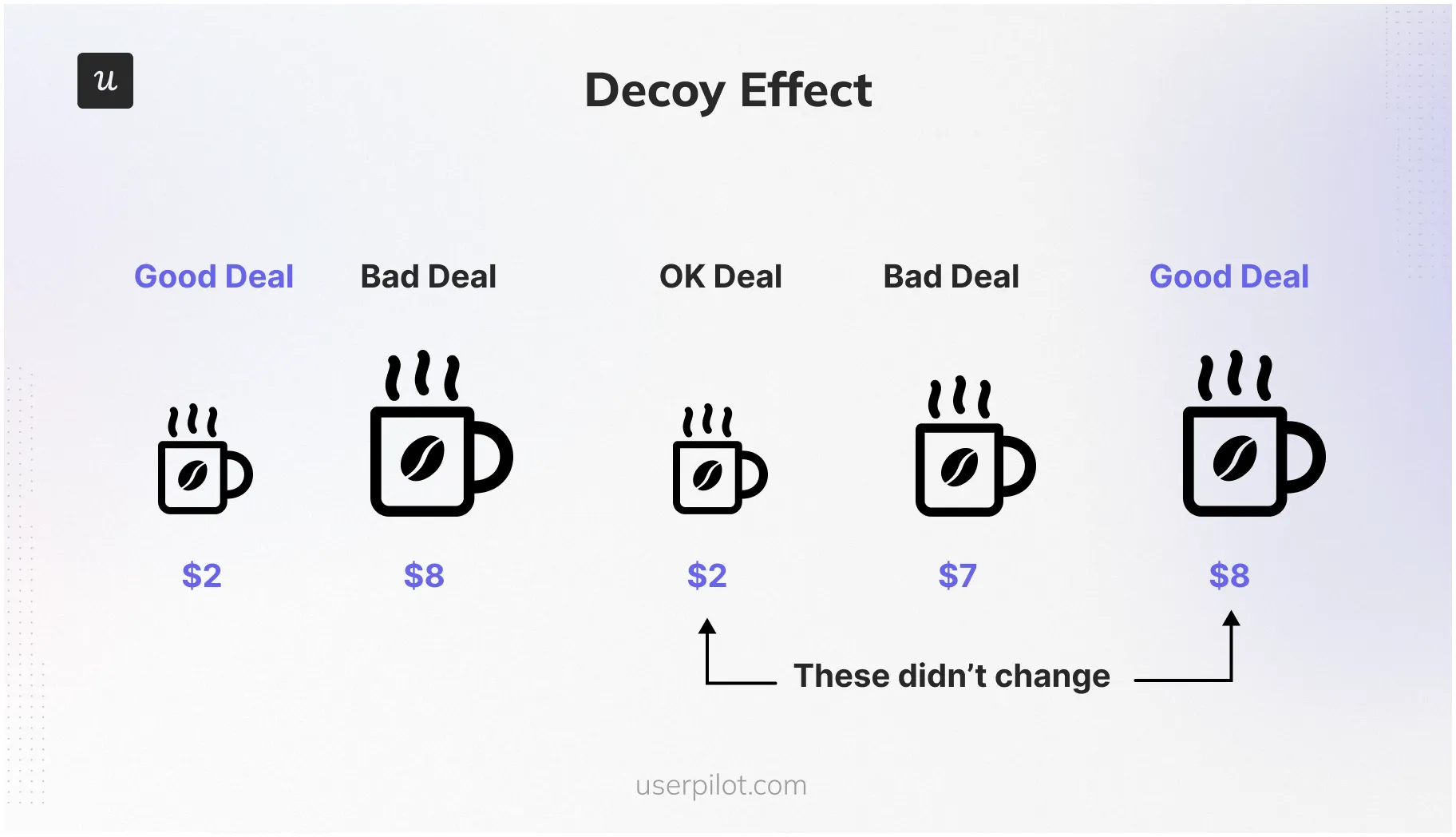
- Choice architecture: How you present your pricing options can significantly influence customer choices. For example, highlighting a specific plan as the “default” or “most popular” can subtly nudge customers toward it.
How to design the best pricing model for your SaaS product
Follow these simple steps to design a pricing model that meets customer needs while maximizing revenue:
1. Consider the entire customer lifecycle
Think beyond the initial sale and align your pricing strategy with the customer lifecycle—from acquisition to retention and expansion.
For example, a freemium model might be excellent for attracting potential customers, but without well-thought-out upselling strategies, many customers will remain on the free plan.
Few tips for capturing value at each stage of the customer journey:
- Offer incentives or discounts to encourage initial adoption.
- Provide clear upgrade paths and highlight the value of premium features to drive free-to-paid conversion.
- Introduce upselling and cross-selling opportunities as customers mature.
- Offer loyalty discounts or incentives to encourage renewals.
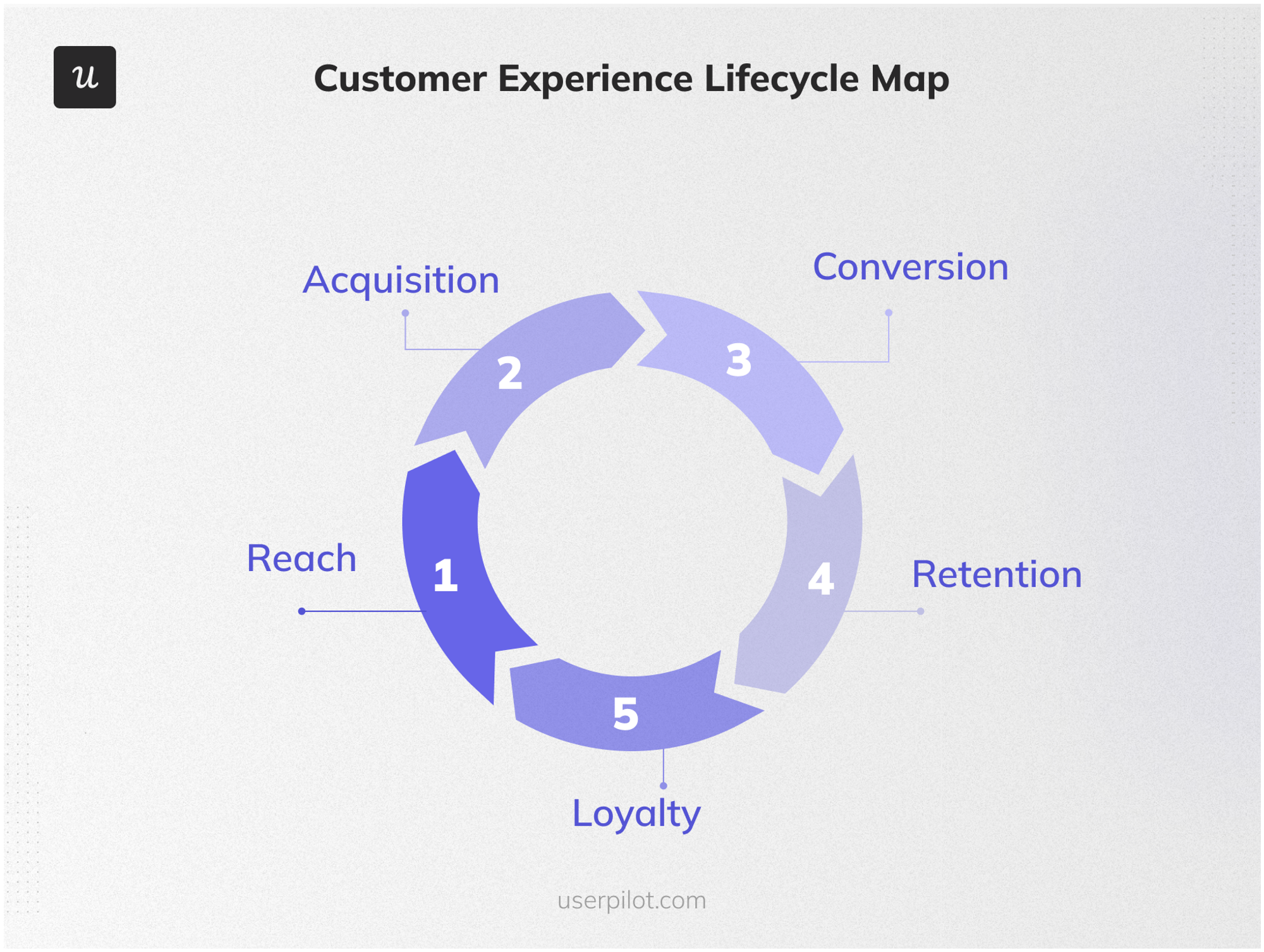
2. Get customer feedback on your pricing
To design a pricing model that truly resonates with your customers, it’s essential to understand their needs, budget constraints, and perceived value. Without this data, you risk setting prices in a vacuum, which can lead to underpricing or overpricing your product.
How to collect customer feedback? Leverage a tool like Userpilot to trigger in-app surveys, asking customers how they perceive the value of your product compared to its price. You can follow up your quantitative surveys with qualitative questions that give customers room to express their thoughts (e.g., “Anything you’d like to share?”).
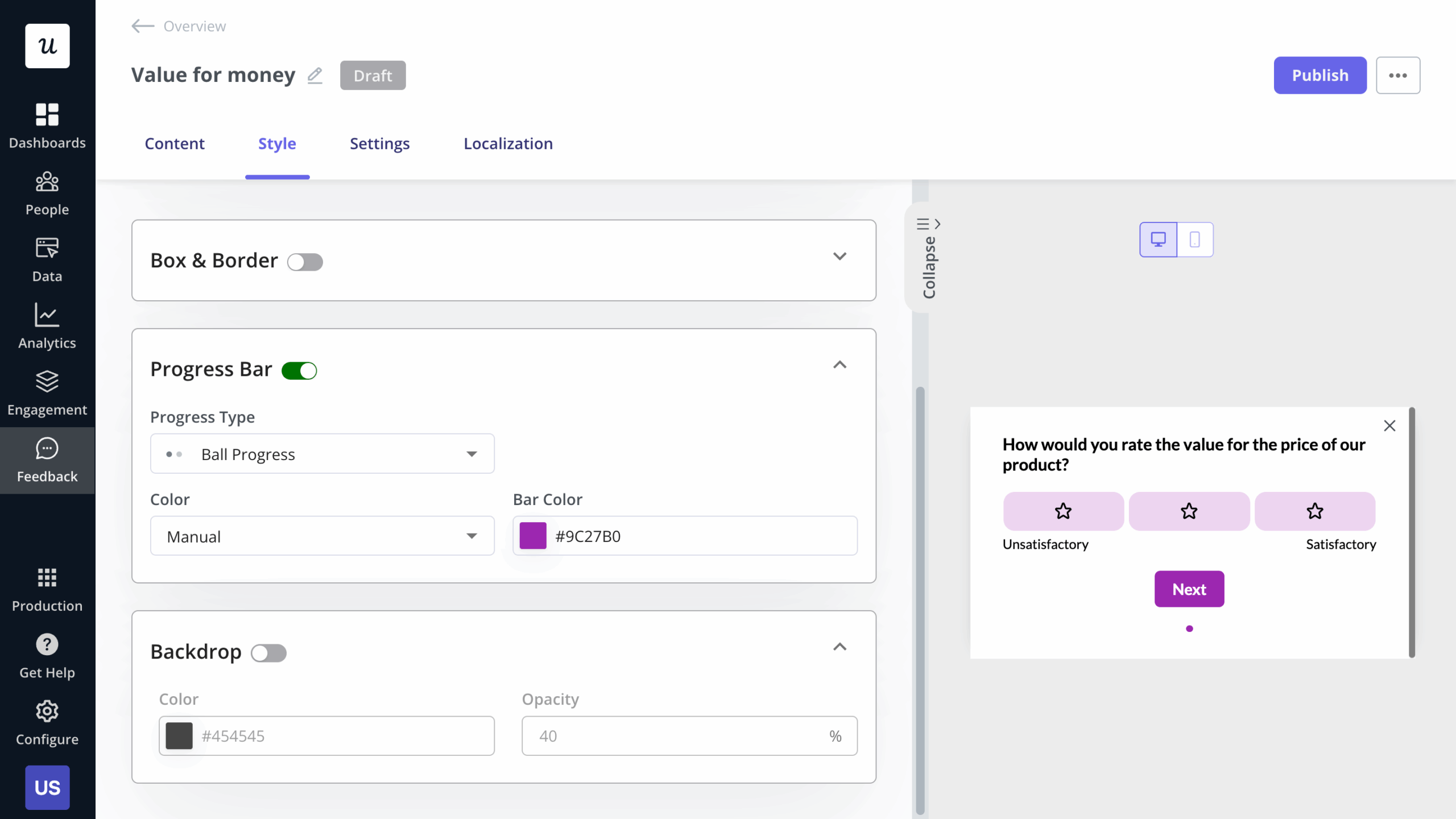
For example, notice how Userpilot breaks down each pricing tier. Adding the “popular” tag to the Growth plan is a great example of the choice architecture principle in action (remember that?).

3. Invest in “Pricing-as-a-Product”
Treat your pricing strategy as an ongoing project, just like you would with your product development. This means continuously analyzing data and iterating on your tactics to optimize for customer value.
These two steps will help:
- Assign ownership: Dedicate a person or team to own your pricing strategy. This ensures that your pricing remains a priority and is consistently reviewed and refined.
- Understand your “customers”: Identify both your external customers and internal stakeholders (e.g., sales, customer success) and regularly collect feedback from them. External customers provide insights into their willingness to pay and perceived value, while internal stakeholders offer valuable perspectives on market dynamics, competitive pricing, and sales strategies. Gathering input from both groups will equip you to develop a well-rounded and informed pricing strategy.
4. Optimize pricing based on different customer segments
A one-size-fits-all approach to pricing can lead to missed opportunities and customer dissatisfaction. For example, enterprise customers typically have heavier needs than small teams or solopreneurs. Imagine having flat pricing for both user groups!
One of two things will happen: either the enterprise customer will use more than they’re paying for (meaning you’re leaving money on the table), or the small business will overpay for features they don’t use. By segmenting your customers, you can tailor your pricing to their specific needs and willingness to pay.
So, how do you identify these segments? Consider factors like:
- Product usage.
- Company size.
- Industry.
- Geographic location—if you want to factor in purchasing power parity.
Userpilot makes it easy to create segments based on the above factors. Here’s an example of segmenting power users to better understand their behavior:

5. Use your “sticky” features for free (within reason)
Sticky features are those that users find indispensable or difficult to replicate elsewhere—they’re often the key drivers of retention for many SaaS companies.
For example, imagine a design tool that allows users to easily create stunning graphics. Once they get used to the speed and ease of use, they’re less likely to switch to a competitor, even if it offers a slightly lower price.
Key considerations when giving out your key features for free:
- Choose the right features: Identify features that are truly valuable.
- Set reasonable limits: Balance free access with limitations that encourage upgrades without hindering the user experience.
- Communicate the value: Clearly explain the benefits of the sticky features and how they can help users achieve their goals.
6. Don’t jump to a “pricing for value” strategy off the bat
While value-based pricing is often the ultimate goal, it might not be the best place to start, especially if you’re new to the SaaS game or still testing out different approaches.
Why? Because charging the maximum price customers are willing to pay can backfire if you haven’t fully established your product’s value proposition. Existing customers may churn and even spread negative word of mouth if the perceived value doesn’t consistently meet their expectations.
The solution: Start with simpler models like cost-plus or competitor-based pricing to establish a baseline and gather data. You can gradually shift towards a value-based approach as you gain more customer insights.
7. Run pricing experiments
A/B test different pricing models, price points, and messaging to see what works and optimize your pricing strategy.
Userpilot can help you do this code-free. You can even use our platform to run multivariate tests—comparing more than two variables at a time.
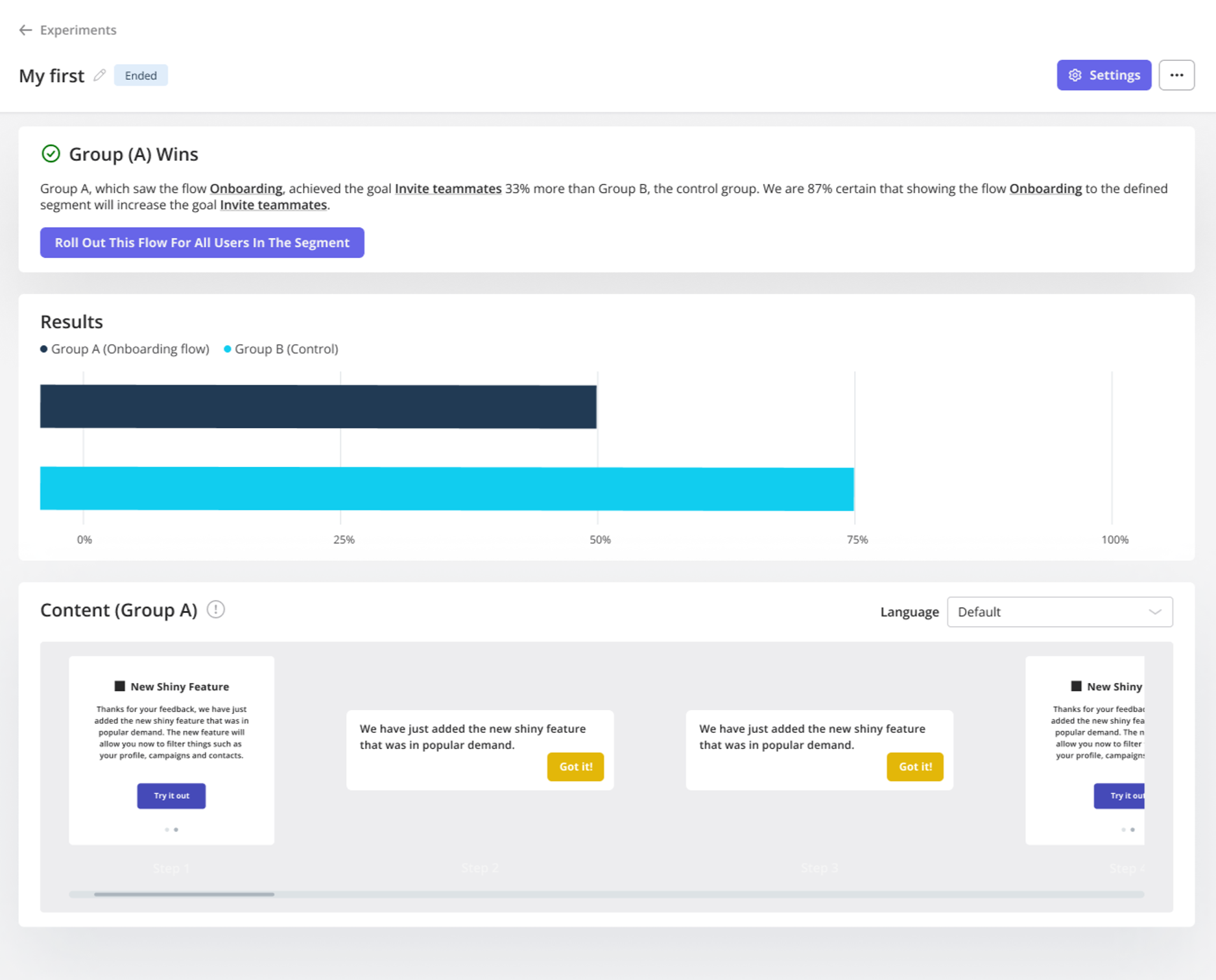
SaaS pricing models FAQs
How do I choose the best pricing strategy for my SaaS business?
Consider factors like your target market, your product’s value, the competitive landscape, and your overall business goals. Gather actionable insights from all these data points and make an informed decision. The right pricing strategy for you will depend on your unique metrics and objectives.
What are some common pricing mistakes to avoid?
Avoid these mistakes:
- Pricing too low.
- Pricing too high.
- Not experimenting with different SaaS pricing strategies to identify the most compatible.
- Not analyzing customer data for growth insights.
Conclusion
Successful SaaS pricing goes beyond just putting numbers on your pricing page. It’s more about deeply understanding your customers and creating a win-win situation where they derive value from your product and your bottom line grows. Of course, achieving this balance is easier said than done.
But regular experimentation and customer feedback analysis can help you determine the best SaaS pricing models for your brand. This is where Userpilot comes in. You can use our platform to deploy contextual customer feedback surveys, track in-app behaviors, and conduct product experiments, all code-free. Book a demo today to begin!








